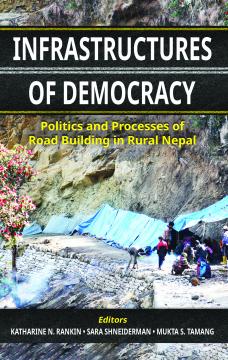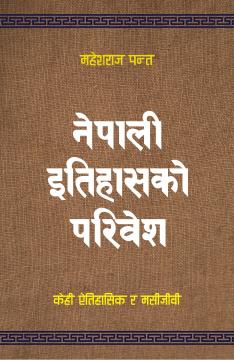Kathmandu comprises an intricate collection of spaces, histories, conflicts, and imaginaries. Long a site of contestation, aspiration, and external projection, the city encompasses a bundle of seeming contradictions: ancient and modern, traditional and cosmopolitan, ever-changing and yet consistently itself. In the twenty-first century, research about contemporary Kathmandu—and the Kathmandu Valley more broadly—has proliferated, owing to transformations in the city itself as well as to shifts within the social sciences. The upshot has been a diverse and nuanced literature exploring the intertwined politics, cultures, and geographies of the present city and its surrounds. Collected here for the first time, the articles in this volume offer an exemplary snapshot of current research about a rapidly changing metropolis. Presenting both classic texts and more recent work by young scholars, this book maps the contours of a still-emerging body of work, exploring everything from housing markets to heritage, memory to migration, infrastructure to identity, and much more. The diversity of themes is meant not only to give a broad overview, but also to supply readers with embarkation points for further research. Thus, as both a handy reference and an introductory anthology, Kathmandu: A Reader sustains a crucial, ongoing conversation about the city’s past, present, and future.
***
Benjamin Linder is an anthropologist and cultural geographer with interests in urban place-making, transnational mobilities, and cultural transformation in Nepal. He currently serves as the Coordinator for Public & Engaged Scholarship at the International Institute for Asian Studies (IIAS), Leiden University, the Netherlands. He is also an associate editor of Studies in Nepali History and Society. |
Contents
Reprinting Rights Acknowledgments ix
Preface xiii
Introduction
Contemporary Kathmandu: Current Research on a Changing City 1
Benjamin Linder
Part I – Urban Form: Planning and Housing
1. Urban Development and Town Planning in a Historical Perspective 29
Niels Gutschow
2. Land Markets and the Emerging Urban Form in the Kathmandu Valley 45
Biresh Shah
3. Prestigious Houses or Provisional Homes? The Ghar as a Symbol of Kathmandu Valley Peri-urbanism 69
Andrew Nelson
4. Can a Financial Bubble Burst If No One Hears the Pop?
Transparency, Debt, and the Control of Price in the Kathmandu Land Market 95
Andrew Haxby
5. Road Expansion and Urban Highways: Consequences Outweigh Benefits in Kathmandu 115
Prashanta Khanal, Anobha Gurung and Priyankar Bahadur Chand
6. “Inauthentic” Sukumbasi: The Politics of Aesthetics and Urgency in Kathmandu 133
Sabin Ninglekhu
Part II – Urban Cultural Politics: Identity and Memory
7. Farewell to the Bagmati Civilization: Losing Riverscape and Nation in Kathmandu 157
Anne Rademacher
8. Ganatantra Smarak (Republic Memorial): The Politics of Memory 177
Bryony Whitmarsh
9. Cosmological Corrections: Mapping the Ideological Construction of Traditional Places in Bhaktapur 223
Gregory Grieve
10. Kathmandu Darbar Square: Heritage Reconstruction as a Political
Process of Negotiating Ownership and Authority 257
Stefanie Lotter
11. “Scooty Girls”: Gender, Mobility, and Intimacy at the Edge of the Kathmandu Valley 283
Jan Brunson
Part III – Urban Lives: Labor and Consumption
12. Carnal Economies: The Commodification of Food and Sex in Kathmandu 307
Mark Liechty
13. Mobile Places: Toponymy and the Socio-spatial Extension of Thamel 355
Benjamin Linder
14. Identity and Representation of Gangsters and Gangs 383
Rashmi Sheila
15. Lines of Labor and Desire: “Korean Quality” in Contemporary Kathmandu 409
Heather Hindman and Robert Oppenheim
16. Waiting: Social Meanings of Immobility in Kathmandu 443
Sandhya A.S.
Afterword
Kathmandu: A Tale of Three Cities? 467
Sabin Ninglekhu
Notes on the Contributors 477
Index 479
***
Reviews/mentions in media
Review forthcoming in Studies in Nepali History and Society, 30(2) December 2025 by Rachana Upadhyaya
http://martinchautari.org.np/storage/files/sinhas-vol30-no2-book-review-rachana-upadhyaya-for-web.pdf












